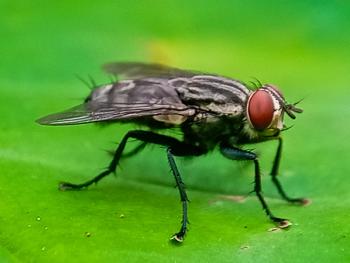
Leptospirosis (Proceedings)
Leptospirosis is a zoonotic disease caused by bacteria in the genus Leptospira. The taxonomy of genus Leptospira is complex and continuing to evolve. Historically, there were only two recognized species, L. interrogans and L. biflexa, that were further divided into nearly 300 serovars.
Leptospirosis is a zoonotic disease caused by bacteria in the genus Leptospira. The taxonomy of genus Leptospira is complex and continuing to evolve. Historically, there were only two recognized species, L. interrogans and L. biflexa, that were further divided into nearly 300 serovars. Genetic analysis of leptospires have now been used to describe over 15 genomospecies. Leptospira interrogans serovars are believed to be responsible for the vast majority of leptospirosis in veterinary medicine. The existence of multiple typing schemes creates confusion, because some serovars and serogroups contain organisms from different genomospecies.
Epidemiology
Leptospires are shed in the urine of infected animals. Leptospires are susceptible to drying, but can survive in wet or moist conditions for prolonged periods of time. The organisms enter new hosts through mucous membranes or abraded skin when those animals come into contact with infected urine. This can occur through direct contact with infected animals or from environmental contact. Some reservoir species for serovars that are pathogenic to dogs include cattle, pigs, horses, skunks, raccoons, opossums, rodents and other canines.
While leptospirosis can occur in nearly any dog, regardless of age, sex, breed or habitation; middle aged, male, large breed dogs and dogs that have access to outdoors, drink or swim in outdoor water, live in recently urbanized areas or have exposure to wildlife appear to be at the highest risk for infection. There are reports of leptospirosis outbreaks after flooding or heavy rains.
Once the leptospires enter the host, they are disseminated via the bloodstream. While many organs become infected, the primary target organs that result in clinical disease are the kidneys, liver and lungs. Ultimately the organisms colonize of the proximal renal tubules from which they are shed into the urine.
Clinical Disease
The majority of leptospiral infections in dogs appear to be subclinical and the factors that result in the development of disease remain largely unknown. Disease can be either peracute, acute, subacute or chronic. A subacute presentation seems to be the most common type of presentation. The typical presenting complaints for dogs with leptospirosis are non-specific including lethargy, depression, anorexia and vomiting. About one third of dogs will present with a history of polyuria and polydipsia. Other less common presenting signs include stiffness, myalgia, arthralgia, abdominal pain, ocular or respiratory signsWhile fever is frequently referred to as a common finding a more careful review of the literature suggests that fever is present in less than half of the reported cases. Likewise other physical examination findings are variable from case to case, but may include: icterus, musculoskeletal or abdominal pain, conjunctivitis, uveitis, cough or nasal discharge.There is some evidence that leptospirosis may be associated with more chronic manifestations such as chronic active hepatitis or chronic renal failure.Cats appear to be relatively resistant to developing leptospirosis.
Clinical laboratory findings
Renal and/or hepatic dysfunction are the most common biochemical findings in dogs with leptospirosis. While the presence of both renal and hepatic dysfunction are often the primary indicators that prompt clinicians to suspect leptospirosis, it must be kept in mind that many cases present with only renal or hepatic involvement. The liver enzyme profiles often have evidence of both hepatocellular and cholestatic disease. Urinalyis findings may include isosthenuria, hematuria, proteinuria, glucosuria and bilirubinuria. Occasionally cases present without overt biochemical evidence of either hepatic or renal dysfunction. Leukocytosis and thrombocytopenia are the most common hematological abnormalities. In severe cases, disseminated intravascular coagulation can occur.
Diagnosis
Serologic diagnosis achieved by performing acute and convalescent titers is considered the best way to diagnose leptospirosis. Diagnosis should be confirmed by documenting a 4-fold increase in the convalescent titer (obtained 3-4 weeks after the acute titer) or by a single titer greater than 1:800. Most commercial laboratories perform microscopic agglutination tests (MAT) for multiple serovars. It is generally believed that the serovar to which the dog has the highest titer is responsible for the infection. Previous vaccination can result in "positive" titers, but is only rarely associated with persistent titers >1:800.
Other diagnostic tests that are available include: Culture, darkfield microscopy, PCR, ELISA, and direct immunofluorescence. While culture, microscopy, PCR and direct immunofluorescence can detect current infection there can be false positive results in animals that are subclinical carriers.
Treatment
Tetracycline antibiotics will clear both leptospiremia and leptospiruria, so they are my treatment of choice for most dogs. Doxycycline 5mg/kg IV or PO BID for at least two weeks (I often treat for four weeks since rickettsial diseases are usually also differential diagnoses for these patients). Penicillins will clear leptospiremia, but are not effective at clearing the carrier state. Supportive care with IV fluids and anti-emetics is required in most cases.
Prevention in dogs
Bacterin and subunit vaccines are available against L. interrogans ser. icterohaemorragiae and L. interrogans ser. Canicola and a subunit vaccine against L. interrogans ser. Grippotyphosa and L. interrogans ser. Pomona. There is some controversy surrounding the duration of immunity for each vaccine and they are not considered core vaccines. Dogs that are at higher risk (i.e. dogs that have access to outdoors, drink or swim in outdoor water, live in recently urbanized areas or have exposure to wildlife or come from areas/households where other animals have been diagnosed with leptospirosis) should be vaccinated at least once yearly and perhaps as frequently as every six months.
Zoonosis prevention
Since the initial presenting complaints for dogs with leptospirosis are non-specific, general precautions should be taken when handling any sick animals such as the use of latex or nitrile gloves to handle patients and their biological fluids. All personnel (including laboratory staff) and owners should be notified immediately of the zoonotic potential. If leptospirosis appears more likely based on laboratory data, the use of protective gowns and faceshields are required.
References available upon request
Newsletter
From exam room tips to practice management insights, get trusted veterinary news delivered straight to your inbox—subscribe to dvm360.




